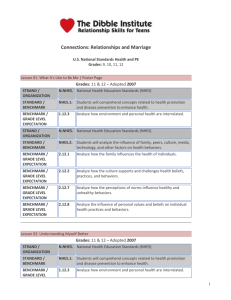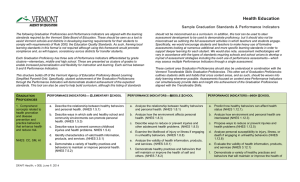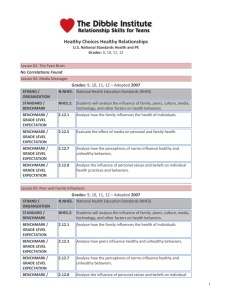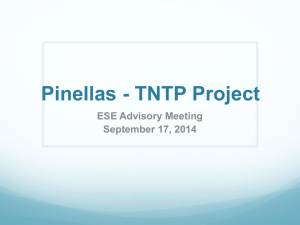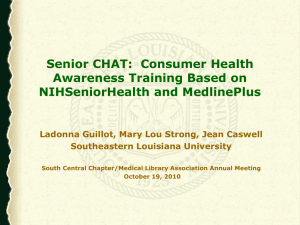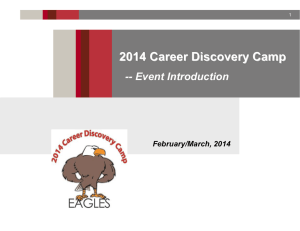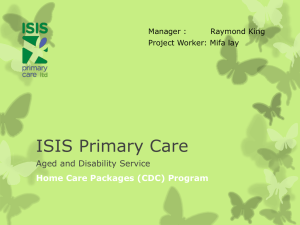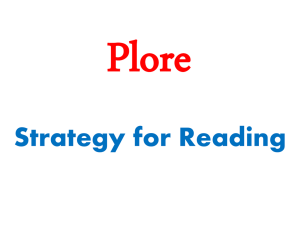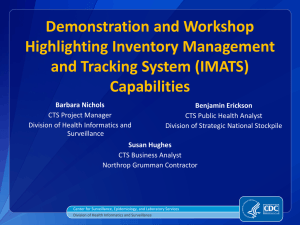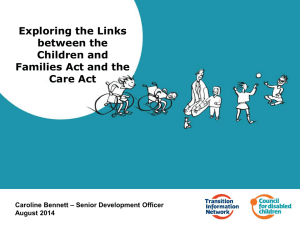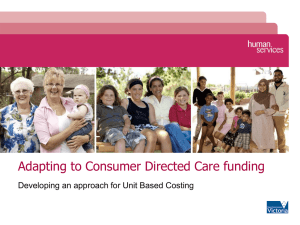Using Medline-plus to Teach Health - Castleton
advertisement
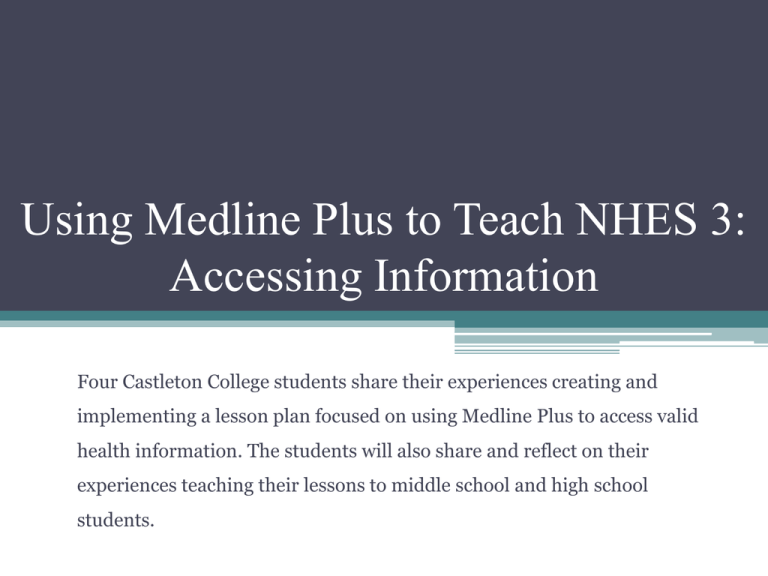
Using Medline Plus to Teach NHES 3: Accessing Information Four Castleton College students share their experiences creating and implementing a lesson plan focused on using Medline Plus to access valid health information. The students will also share and reflect on their experiences teaching their lessons to middle school and high school students. Presenters Dan Belleville, BS.HED.ESE, ‘15 Brynna-Lee Carper, BS.PED.ESE, ‘15 Kali Trautwein, BS.HED.ESE, ‘15 Andrew Worden, BS.PED.ESE, ‘15 • This project was funded in whole or in part with Federal funds from the National Library of Medicine, National Institutes of Health, Department of Health and Human Services, under Contract No. HHS-N-276-2011-001C with the University of Massachusetts Medical School. Purpose • Review National Health Education Standards (NHES), specifically NHES 3. • Review steps to skill development. • Show you the MedlinePlus website. • Share our lessons and experiences in how to incorporate MedlinePlus in health lessons and the practice of NHES 3. National Health Education Standards • NHES 1: Content Knowledge • NHES 2: Analyzing Influences • NHES 3: Accessing Information • NHES 4: Interpersonal Communication • NHES 5: Decision Making • NHES 6: Goal setting • NHES 7: Self-Management • NHES 8: Advocacy NHES 3: Accessing Information • Students will demonstrate the ability to access valid information, products, and services to enhance health. ▫ Rationale: Access to valid health information and health-promoting products and services is critical in the prevention, early detection, and treatment of health problems. This standard focuses on how to identify and access valid health resources and to reject unproven sources. Application of the skills of analysis, comparison, and evaluation of health resources empowers students to achieve health literacy. http://www.cdc.gov/healthyyouth/sher/standards/3.htm NHES 3: Access Information, Products, and Services • Students: ▫ Analyze the validity of health information, products, and services ▫ Locate sources of valid and reliable health information, products and services ▫ Determine the availability of health products ▫ Describe situations that call for professional health services NHES 3: Access Information, Products, and Services • Assessment criteria: ▫ Access health information Locate specific sources of health information, products, or services relevant to enhancing health in a given situation ▫ Evaluate information sources Explain the degree to which identified sources are valid, reliable, and appropriate as a result of evaluating each source NHES 3: Access Information, Products, and Services • Closely connected to NHES 1. • Learning to access information is as important as learning the information itself. • Includes learning to identify, access, and evaluate health-enhancing products and services. • Questioning consumers ask: ▫ “Who says?” ▫ “What are their qualifications?” ▫ “Who benefits?” Relevancy: Performance Indicators Elementary Pre-K-Grade-2 • 3.2.1 Identify trusted adults and professionals who can help promote health. • 3.2.2 Identify ways to locate school and community health helpers. Grades 3-5 • 3.5.1 Identify characteristics of valid health information, products, and services. • 3.5.2 Locate resources from home, school, and community that provide valid health information http://www.cdc.gov/healthyyouth/sher/standards/3.htm Relevancy: Performance Indicators Middle School Grades 6-8 • 3.8.1 Analyze the validity of health information, products, and services. • 3.8.2 Access valid health information from home, school, and community. • 3.8.3 Determine the accessibility of products that enhance health. • 3.8.4 Describe situations that may require professional health services. • 3.8.5 Locate valid and reliable health products and services. http://www.cdc.gov/healthyyouth/sher/standards/3.htm Relevancy: Performance Indicators High School Grades 9-12 • 3.12.1 Evaluate the validity of health information, products, and services. • 3.12.2 Use resources from home, school, and community that provide valid health information. • 3.12.3 Determine the accessibility of products and services that enhance health. • 3.12.4 Determine when professional health services may be required. • 3.12.5 Access valid and reliable health products and services http://www.cdc.gov/healthyyouth/sher/standards/3.htm Steps in Skill Development 1. Discussing the importance of the skill, its relevance, and relationship to other learned skills; 2. Presenting steps for developing the skill; 3. Modeling the skill; 4. Practicing and rehearsing the skill using real-life scenarios; and 5. Providing feedback and reinforcement. Lets Take a Look at MedlinePlus! http://www.nlm.nih.gov/medlineplus/ Steps in Skill Development 1. Discussing the importance of the skill, its relevance, and relationship to other learned skills; 2. Presenting steps for developing the skill; 3. Modeling the skill; 4. Practicing and rehearsing the skill using real-life scenarios; and 5. Providing feedback and reinforcement. AOD Lessons and Experiences High School • Andrew & Danny ▫ Lesson Plan ▫ Worksheet Middle School • Kali & Brynna ▫ Lesson Plan ▫ Worksheet Recap • Reviewed National Health Education Standards (NHES), specifically NHES 3. • Reviewed the steps to skill development. • Showed you the MedlinePlus website. • Shared our lessons and experiences in how to incorporate MedlinePlus in health lessons and the practice of NHES 3. Questions??

